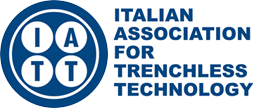This technology allows the laying of subservice infrastructures, such as water, electricity and telecommunication services, through the simultaneous execution or non of reduced dimension reaming of the road surface, pipe or cable layout and furrow filling with cemented mortar. The technique is applicable on layouts which involve, generally, asphalted, concrete surfaces, having a foundation of compact material and are usually performed close to the roadside. Its use where foundations, contain medium size boulders, or are of sandy or gravel type, must be appropriately evaluated according to the circumstances. The working phase foresees the road surface reaming (cut) for a maximum depth of 40 cm, the laying of cables or pipes (up to a maximum of 3 of 40-50 mm in diameter) and the trench filling. For the latter, generally cement mortar up to 3 cm of the step area is used, completing the filling with the material with which the final wearing course is made.
The growing interest in the utilization of this technology, above all in the telecommunications sector, has led to the development of new filling materials (rapid mortar) which are characteristically superior to classic mortars and allow the mini trench to be filled up to the pedestrian or vehicle area, therefore avoiding the restoration of the wearing course. In particular, the mortar has recently been awarded certification by the ANAS Study and Research Centre. The equipment used is of such dimensions as to allow the setup of worksites of extremely limited dimensions, ensuring easy utilization in both urban and extra urban environments.
